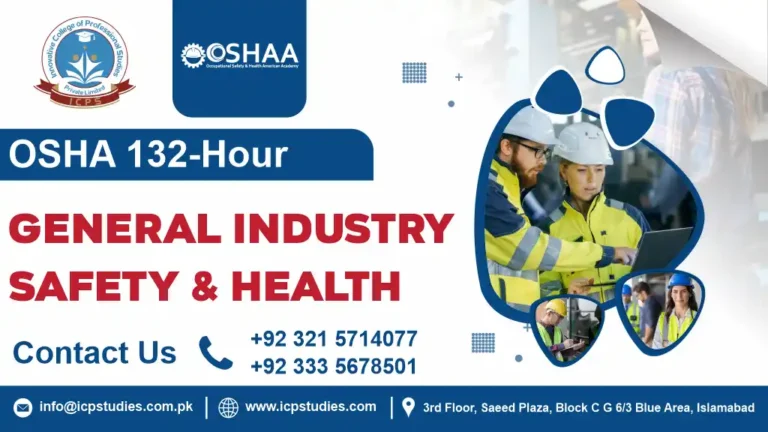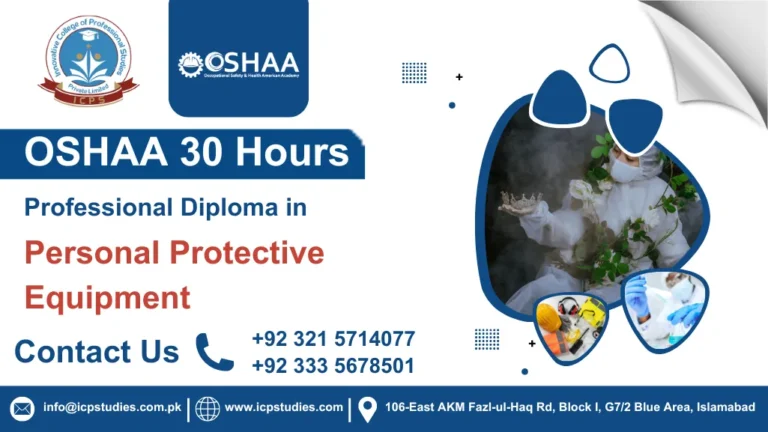Ensuring a safe working environment is not just a regulatory requirement but a cornerstone of a productive and healthy workplace. For those responsible for maintaining safety standards in general industry settings, the OSHA 48-Hour General Industry Safety and Health course offers a valuable opportunity to deepen their understanding and enhance their skills.
The OSHA 48-Hour General Industry Safety and Health course is an intermediate-level training program designed to provide participants with a thorough understanding of OSHA regulations and general industry safety practices. Spanning 48 hours, this course is shorter than the comprehensive 132-hour program but still delivers substantial knowledge essential for safety management in various industry settings.
The OSHA 48-Hour General Industry Safety and Health course provides a focused yet comprehensive approach to understanding and applying key safety regulations and practices. For professionals involved in workplace safety, this course offers essential training that enhances safety management skills, ensures compliance, and contributes to a safer working environment. Whether you’re looking to deepen your expertise or advance your career in safety, this course is a valuable investment in your professional development and workplace safety.
All About OSHA 48-Hour General Industry Safety and Health
Course Overview
The OSHA 48-Hour General Industry Safety and Health course is an intermediate-level training program designed to provide participants with a thorough understanding of occupational safety and health standards specific to general industry environments. This course, offered by the Occupational Safety and Health Administration (OSHA), spans 48 hours and serves as a practical, in-depth exploration of key safety regulations and best practices.
OSHA 48-Hour General Industry Safety and Health course is a valuable training opportunity for professionals seeking to deepen their knowledge of workplace safety and health. It provides a solid foundation in key safety standards and practices, enabling participants to contribute effectively to creating safer work environments and ensuring compliance with OSHA regulations.
Study Units
- Introduction to OSH Management
- Risk Assessment and Hazard Identification
- Regulatory Compliance and Legal Requirements
- Safety Program Development and Implementation
- Incident Investigation and Reporting
- Leadership and Communication in Safety Management
- Emergency Preparedness and Response
- Ergonomics and Workplace Design
- Health and Wellness Programs
- Occupational Health and Industrial Hygiene
- Safety Training and Education
- Safety Performance Measurement and Improvement
- Contractor and Vendor Safety Management
- Environmental Management and Sustainabilit
To enroll in the OSHA 48-Hour General Industry Safety and Health course, participants typically need to meet the following requirements:
- Age Requirement: Participants should be at least 18 years old.
- Basic Literacy: A good understanding of English is essential, as course materials and instruction are primarily in English.
- Job Relevance: Familiarity with general industry practices or relevant experience is beneficial but not mandatory.
- No Formal Prerequisites: There are generally no strict prerequisites for this course, although some prior knowledge of safety regulations and practices can be advantageous.
- Course Registration: Participants must register for the course through an authorized training provider.
- Payment: Course fees must be paid as required by the training provider.
- Commitment to Attend: Participants should be prepared to attend the full duration of the course (48 hours) to receive certification.
Always check with the specific training provider for any additional or varying requirements
The OSHA 48-Hour General Industry Safety and Health course is designed for:
- Safety Professionals: Individuals responsible for safety management and compliance in general industry settings.
- Supervisors and Managers: Those overseeing workers who need a deeper understanding of safety regulations and practices.
- Workers in General Industry: Employees looking to enhance their safety knowledge and skills.
- Safety Coordinators: Professionals focused on implementing and monitoring safety programs.
- Health and Safety Committee Members: Employees involved in promoting workplace safety initiatives.
- Contractors and Subcontractors: Individuals working in various roles within general industry environments.
- Anyone Seeking Advanced Safety Training: Individuals aiming to deepen their understanding of safety practices and regulatory compliance for career advancement.
This course provides comprehensive training on hazard recognition, risk management, and safety regulations, equipping participants to create and maintain safer work environments.
Learning Outcome
Introduction to OSH Management
- Learning Outcome: Understand the fundamentals of Occupational Safety and Health (OSH) management, including key concepts, principles, and the role of safety management systems in promoting a safe work environment. Develop the ability to implement and manage safety programs in various general industry settings.
2. Risk Assessment and Hazard Identification
- Learning Outcome: Acquire the skills to systematically identify workplace hazards and assess risks. Learn how to conduct risk assessments and develop strategies to control and mitigate identified hazards effectively.
3. Regulatory Compliance and Legal Requirements
- Learning Outcome: Gain a comprehensive understanding of OSHA regulations and legal requirements relevant to general industry. Learn how to interpret and apply these regulations to ensure compliance and avoid potential legal issues.
4. Safety Program Development and Implementation
- Learning Outcome: Learn to design, develop, and implement effective safety programs tailored to organizational needs. Understand the components of a successful safety program, including policies, procedures, and employee involvement.
5. Incident Investigation and Reporting
- Learning Outcome: Master techniques for investigating workplace incidents, identifying root causes, and documenting findings. Learn how to create incident reports that comply with regulatory requirements and contribute to improving safety practices.
6. Leadership and Communication in Safety Management
- Learning Outcome: Develop leadership and communication skills essential for effective safety management. Learn how to motivate employees, foster a safety culture, and communicate safety policies and practices clearly to all levels of the organization.
7. Emergency Preparedness and Response
- Learning Outcome: Understand the principles of emergency preparedness and response. Learn to develop and implement emergency response plans, conduct drills, and ensure that employees are prepared to handle various types of emergencies.
8. Ergonomics and Workplace Design
- Learning Outcome: Gain knowledge in ergonomics and its application to workplace design. Learn how to design workstations and tasks to reduce physical strain and improve employee comfort and productivity.
9. Health and Wellness Programs
- Learning Outcome: Understand the components of effective health and wellness programs. Learn how to develop and promote initiatives that support employee well-being, reduce health risks, and enhance overall workplace health.
10. Occupational Health and Industrial Hygiene
- Learning Outcome: Acquire skills in occupational health and industrial hygiene. Learn how to identify and control health hazards, conduct exposure assessments, and implement measures to protect employee health.
11. Safety Training and Education
- Learning Outcome: Learn techniques for developing and delivering effective safety training programs. Understand how to create engaging educational materials and deliver training that enhances employee awareness and compliance with safety practices.
12. Safety Performance Measurement and Improvement
- Learning Outcome: Understand methods for measuring and evaluating safety performance. Learn how to use performance metrics to identify areas for improvement and implement strategies to enhance overall safety performance.
13. Contractor and Vendor Safety Management
- Learning Outcome: Gain insights into managing safety for contractors and vendors. Learn how to assess and ensure that external parties adhere to safety standards and integrate them into the organization’s safety management system.
14. Environmental Management and Sustainability
- Learning Outcome: Understand the principles of environmental management and sustainability in the context of workplace safety. Learn how to develop and implement practices that reduce environmental impact and promote sustainable operations.
These learning outcomes ensure that participants of the OSHA 48-Hour General Industry Safety and Health course gain a well-rounded and practical understanding of essential safety and health management concepts, preparing them to effectively enhance workplace safety and compliance in general industry settings.
FAQs about OSHA 48-Hour General Industry Safety and Health







